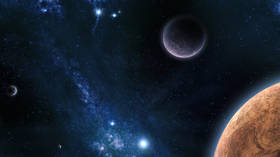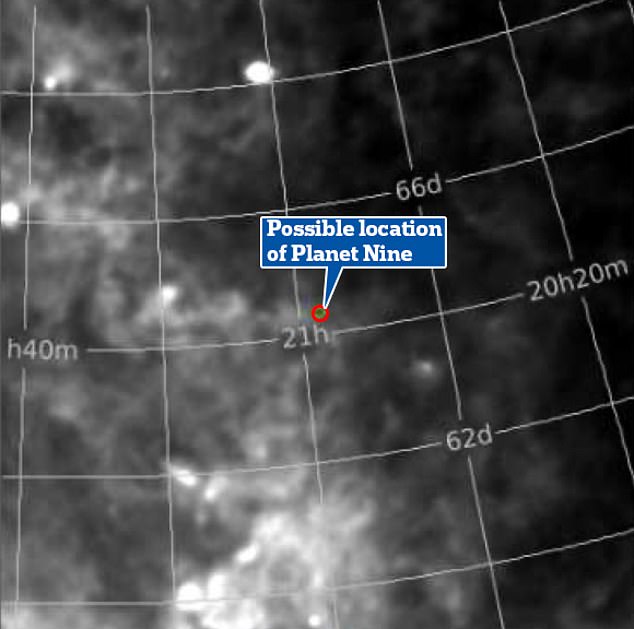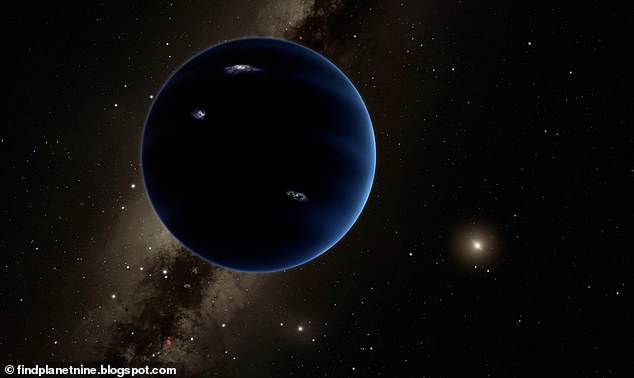SECRET SPACE: The Hunt For The Elusive Planet Nine
SM
Source – rt.com
- “….An object lurking in the outer region of our solar system may well be the elusive Planet 9…Possible evidence of a mysterious planet up to 10 times bigger than Earth, with a distant orbit around the Sun, has been unveiled by professor of astrophysics at Imperial College of London, Michael Rowan-Robinson. Aiming to prove – or rule out – the existence of another big planet beyond Neptune, the UK scientist decided to conduct a new analysis of data collected by the Infrared Astronomical Satellite (IRAS) in 1983″
Mysterious new planet possibly spotted in solar system

 Akirastock / Getty Images
Akirastock / Getty Images
An object lurking in the outer region of our solar system may well be the elusive Planet 9, a leading British astronomer has suggested after digging through the telescope archives of 250,000 point sources.
Possible evidence of a mysterious planet up to 10 times bigger than Earth, with a distant orbit around the Sun, has been unveiled by professor of astrophysics at Imperial College of London, Michael Rowan-Robinson. Aiming to prove – or rule out – the existence of another big planet beyond Neptune, the UK scientist decided to conduct a new analysis of data collected by the Infrared Astronomical Satellite (IRAS) in 1983.
The astronomer has looked through some 250,000 point sources detected by the telescope, which took a far-infrared survey of 96% of the sky. Having analyzed the data, keeping in mind the hypothetical planet’s size and distance, “at the very limit of the survey,” he singled out a moving object that the satellite picked out on three occasions.
The candidate for Planet 9 would be up to five times the mass of Earth, according to the IRAS data. Its orbital distance would be some 225 times farther than that of our planet, equaling about 33.7 billion kilometers (20.9 billion miles) from the Sun.
READ MORE: Astronomers find exoplanet with unusual orbit
If the enigmatic object is indeed rotating around the Sun at such a distance, it would be extremely cold and not much sunlight would be reflected by it, making it even more elusive and harder to find. While the latest study is not a clear detection, it could be valuable as guidance for where exactly to search for the new planet, the astronomer concluded.
“Given the great interest of the Planet 9 hypothesis, it would be worthwhile to check whether an object with the proposed parameters and in the region of sky proposed, is inconsistent with the planetary ephemerides,” he wrote in the preprint paper, accepted for publication in the Monthly Notices of the Royal Astronomical Society.
A debate on the possible existence of an undiscovered planet in our solar system has been ongoing for decades. With no concrete evidence found, there has been speculation about its presence, mainly based on the gravitational clustering of objects in the system’s outer reaches. Several years ago, a suggestion was put forward that a group of icy objects that lie beyond the orbit of Neptune in the Kuiper Belt are possibly under the gravitational influence of a larger mysterious body, possibly Planet 9. The claim was based not on observation, but on modeling.
Currently, the eighth and farthest known planet from the Sun is Neptune. In the last century, Pluto, discovered in 1930, was regarded as the ninth planet, but a controversial vote at the International Astronomical Union (IAU) in 2006 formally excluded it from the solar system’s ‘planets’, and reclassified it as a dwarf planet.
https://www.rt.com/news/540624-planet-nine-existence-study/
Related….
Mysterious small and cold object glimpsed 20 BILLION miles from Earth in 1983 may have been elusive Planet Nine, scientists claim
- A large planet in the outer solar system has been a pervasive idea for decades
- This increased 2016 when astronomers found Kuiper Belt objects behaving odd
- This suggested their orbit was being influenced by a larger high mass object
- The new study involved looking for ‘blips’ in older far-infrared sky observations
- This information revealed three blips that could be Planet Nine 225 AU away
By Ryan Morrison
A mysterious, small and cold object seen 20 billion miles from Earth by astronomers in 1983 may have been the elusive Planet Nine, according to a new report.
Astronomers have speculated over the existence of a hidden planet in the outer reaches of the solar system for decades, gaining renewed interest in 2016 when new evidence came to light, but nothing has ever been directly observed.
Michael Rowan-Robinson, from Imperial College London, turned to the archives in the hope of finding a ‘blip’ in old data that could point to its existence.
He analysed data collected by the Infrared Astronomical Satellite (IRAS) in 1983, finding three potential sources that might just be ‘Planet Nine’.
While Rowan-Robinson admits that the probability of the object being Planet Nine is ‘not overwhelming’, he claims it ‘would be worthwhile to check.’

+5
Michael Rowan-Robinson, from Imperial College London, turned to the archives in the hope of finding a ‘blip’ in old data that could point to its existence. The faint green dot above 21h int he centre of this image is what ‘could’ be Planet Nine

+5
A mysterious, small and cold object seen 20 billion miles from Earth by astronomers in 1983 may have been the elusive Planet Nine, according to a new report
WHAT DOES THE DISCOVERY TELL US ABOUT PLANET NINE?
Using data from the Infrared Astronomical Satellite (IRAS), astronomer Michael Rowan-Robinson found ‘blips’.
They were recorded on June, July and September of 1983 and might be Planet Nine moving across the sky.
They could equally be ‘noise’ from other sources on the galactic plane.
According to the IRAS data, if the points of data are Planet Nine, it is up to five times the mass of Earth and actually orbiting 225 AU from the sun.
At five times the mass of the Earth it would be considered a ‘Super Earth,’ that is a category of rocky world seen in other solar systems beyond our own.
It is larger than the Earth, but smaller than the gas giant worlds.
At 225 AU from the sun, or nearly 21 billion miles, it is deep in the Kuiper Belt – a band of frozen objects that include Pluto and sit beyond Neptune.
If Planet Nine is out there it would be five to 10 times larger than the Earth, and would orbit up to 800 times further from the Sun than the Earth.
To put this in context, the Earth is currently 92 million miles from the Sun, or 1 astronomical unit (AU), whereas Pluto – which was reclassified in 2006 from a planet to a dwarf planet – is 40AU, or 3.7 billion miles.
The incredible distance and relatively small size make it challenging to find – it is too far away from the sun to be illuminated by the star, so only visible in blips, and theorised by the impact its gravity has on objects beyond Neptune.
Astronomers Mike Brown and Konstantin Batygin of Caltech reignited interest in the potential ‘Super Earth’ planet, after finding small objects in the Kuiper Belt were orbiting as if they’d been pushed about by the gravity of a larger object.
A number of theories have been proposed to explain this unusual behaviour, including the prospect of Planet Nine actually being a grapefruit-sized black hole.
But the concept of a ‘Super Earth’, a category of planet found in many other systems outside our own, is pervasive, drawing astronomers to the cause.
IRAS was a satellite operated for 10 months from January 1983, and during its time in orbit it took a far-infrared survey of 96 per cent of the sky.
This is the perfect part of the electromagnetic spectrum for finding small, cool objects like Planet Nine, but it was long enough ago that astronomers weren’t loking for the distant world when the data was collected.
https://www.dailymail.co.uk/sciencetech/article-10208555/Mysterious-small-cold-object-Planet-Nine-study-claims.html?ito=email_share_article-top
https://rielpolitik.com/2021/12/06/secret-space-mysterious-new-planet-possibly-spotted-in-solar-system/
Thanks to: https://rielpolitik.com
Related posts:
Views: 0
 RSS Feed
RSS Feed















 December 8th, 2021
December 8th, 2021  Awake Goy
Awake Goy  Posted in
Posted in  Tags:
Tags: 
















